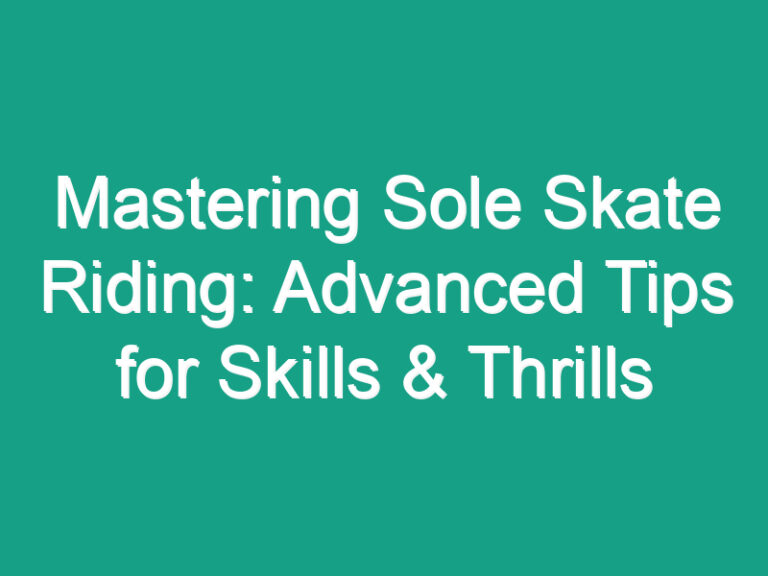
Hey there! Walking with a skateboard can be a breeze once you’ve got the right technique down. As a seasoned skater, I’ve picked up a few tips and tricks along the way that I’m excited to share with you.
When it comes to holding your skateboard while on foot, the key is finding a comfortable and secure grip that allows you to move freely. Let me walk you through the best ways to carry your board while strolling around town or cruising to your next spot.
Key Takeaways
- Choose the Right Grip: Experiment with parallel and diagonal grips to find what feels most comfortable and offers better control and balance.
- One Hand or Two Hands?: The choice between one hand or two hands depends on personal preference, with one hand offering more freedom of movement and two hands providing additional stability.
- Balancing Act: Maintain proper weight distribution, a low center of gravity, and even weight on the skateboard for enhanced stability and control while walking.
- Avoiding Obstacles: Stay attentive to your surroundings, bend your knees when approaching obstacles, and practice navigating through obstacles to improve agility and reflexes.
Choose the Right Grip
Finding the right grip for your skateboard is crucial for a smooth walking experience. Personally, I prefer the parallel grip where my front hand is positioned near the front truck bolts, and my back hand is near the tail. This grip provides me with better control and balance as I walk with my skateboard.
Another popular grip style is the diagonal grip, where one hand is closer to the front truck while the other stays near the tail. This grip works well for many skaters, offering a good balance and ease of movement while walking.
Experiment with different grip styles to determine which one feels most comfortable for you. Your grip should allow for easy transitions between walking and riding on your skateboard. Remember, finding the right grip is a personal preference, so choose the one that feels most natural to you.
When holding your skateboard, make sure to keep your grip firm but not too tight. A relaxed grip will help you maneuver the skateboard easily while walking. Practice holding your skateboard in different grips to find the one that works best for you.
One Hand or Two Hands?
When it comes to holding a skateboard while walking, one question that often arises is whether to use one hand or two hands. The choice between one hand or two hands ultimately depends on personal preference and comfort. Here are some considerations to keep in mind:
- One Hand: Holding the skateboard with one hand can offer more freedom of movement and may feel more natural for some individuals. It allows for easy adjustments and quick transitions when needed.
- Two Hands: On the other hand, using two hands to hold the skateboard can provide additional stability and control, especially for beginners or when navigating uneven terrain. It can help distribute the weight of the skateboard more evenly.
Ultimately, whether you choose to hold your skateboard with one hand or two hands while walking, the key is to find a grip that feels comfortable and secure to you. Experiment with both methods to see which one suits your style and needs best. It’s all about finding what works best for you and enhances your overall walking experience with your skateboard.
Balancing Act
When it comes to holding a skateboard while walking, finding the right balance is crucial. Proper weight distribution between yourself and the board can make a significant difference in your overall experience. Here are a few tips to help you master this balancing act:
- Center of Gravity: Keep your center of gravity low and centered over the skateboard to maintain stability.
- Even Weight Distribution: Distribute your weight evenly on the board to avoid tipping to one side.
- Steady Footing: Ensure your feet are positioned comfortably on the skateboard to maintain balance while walking.
Remember, a well-maintained balance not only enhances your walking experience but also improves your overall control of the skateboard.
Avoiding Obstacles
Navigating through obstacles while walking with a skateboard requires attentiveness and quick reflexes. Observe your surroundings constantly to anticipate any potential obstacles in your path. When approaching an obstacle, bend your knees slightly to maintain balance and prepare for the necessary adjustments.
Quickly assess the situation and decide on the best course of action. Your ability to maneuver efficiently will determine how well you overcome obstacles without losing momentum. Utilize your skateboard as an extension of your body to navigate through tight spaces or over obstructions smoothly.
Remember, practice is key to developing the skills needed for avoiding obstacles effectively. Incorporate obstacle courses into your training routine to enhance your agility and sharpen your ability to react swiftly in unexpected situations.
By honing your skills and staying focused, you can confidently tackle any obstacles that come your way while walking with a skateboard.
Conclusion
Mastering the art of holding a skateboard while walking is all about finding that perfect balance and staying alert to navigate obstacles smoothly. By using your skateboard as an extension of your body and honing your agility through practice and obstacle courses, you’ll be able to move with confidence and grace. Remember to bend your knees when approaching obstacles and react swiftly to maintain your momentum. With dedication and persistence, you’ll soon be effortlessly gliding through any challenges that come your way. Keep practicing, stay focused, and enjoy the thrill of effortlessly walking with your skateboard.
Frequently Asked Questions
How important is balance when holding a skateboard while walking?
Maintaining balance when holding a skateboard while walking is crucial to prevent falls and accidents. It allows for a smoother and more controlled movement, enhancing overall performance.
Why is it significant to avoid obstacles while walking with a skateboard?
Avoiding obstacles is vital as it helps prevent injuries and damage to the skateboard. Being attentive and skillfully maneuvering around obstacles ensures a safe and uninterrupted skateboarding experience.
What techniques can help in navigating obstacles effectively?
Bending your knees when approaching obstacles and using the skateboard as an extension of your body can improve maneuverability and aid in successfully overcoming obstacles while walking.
How can one develop agility for confidently navigating obstacles with a skateboard?
Regular practice, incorporating obstacle courses into training sessions, and continuously honing your skateboarding skills are essential for building agility and the confidence to navigate obstacles proficiently while walking with a skateboard.

Hi, This is Roasalin, I have loved Skating since my early childhood days, and here I share my experiences and tips for beginners who want to turn into pro skaters. I hope you find it useful. you can contact me here






